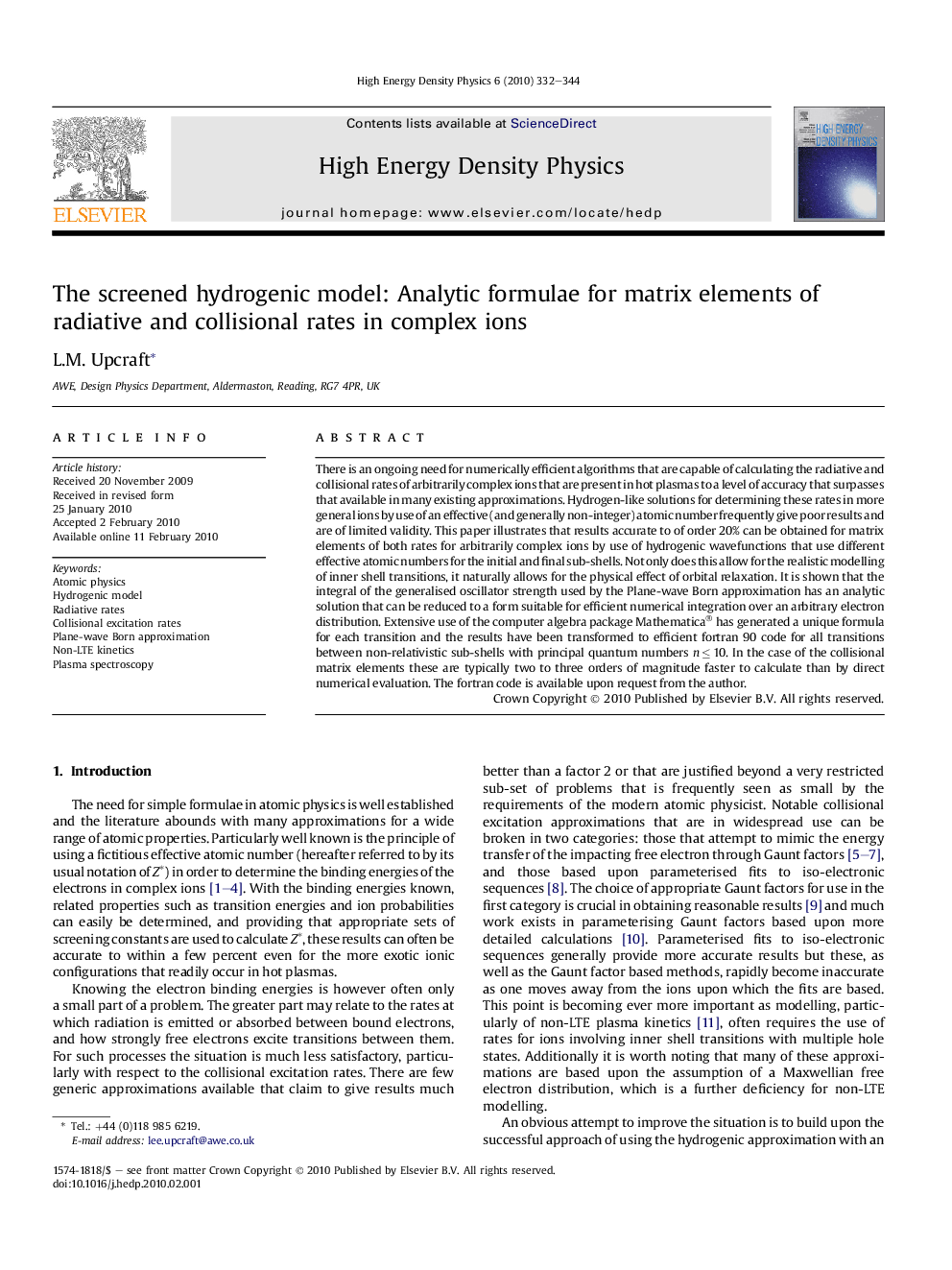| Article ID | Journal | Published Year | Pages | File Type |
|---|---|---|---|---|
| 1772549 | High Energy Density Physics | 2010 | 13 Pages |
There is an ongoing need for numerically efficient algorithms that are capable of calculating the radiative and collisional rates of arbitrarily complex ions that are present in hot plasmas to a level of accuracy that surpasses that available in many existing approximations. Hydrogen-like solutions for determining these rates in more general ions by use of an effective (and generally non-integer) atomic number frequently give poor results and are of limited validity. This paper illustrates that results accurate to of order 20% can be obtained for matrix elements of both rates for arbitrarily complex ions by use of hydrogenic wavefunctions that use different effective atomic numbers for the initial and final sub-shells. Not only does this allow for the realistic modelling of inner shell transitions, it naturally allows for the physical effect of orbital relaxation. It is shown that the integral of the generalised oscillator strength used by the Plane-wave Born approximation has an analytic solution that can be reduced to a form suitable for efficient numerical integration over an arbitrary electron distribution. Extensive use of the computer algebra package Mathematica® has generated a unique formula for each transition and the results have been transformed to efficient fortran 90 code for all transitions between non-relativistic sub-shells with principal quantum numbers n ≤ 10. In the case of the collisional matrix elements these are typically two to three orders of magnitude faster to calculate than by direct numerical evaluation. The fortran code is available upon request from the author.
